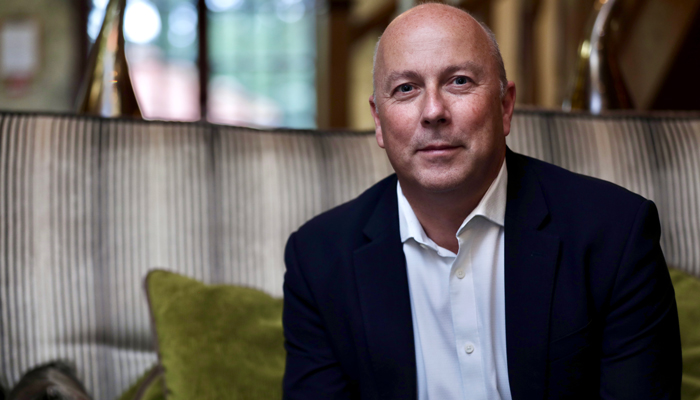Fighting ageism in the workplace is a must to get the over 50s back to work

By Steve Butler, CEO, Punter Southall Aspire
New research from Just Group(i) shows that over half a million economically inactive 50 to 64-year-olds, including 25,000 who had previously retired, are now looking for work. At the same time more than a third of companies with more than 10 workers claim to be experiencing a labour shortage.
The skills shortage is more pronounced in facilities management. Last year ProFMI’s 2022 FM Training Outlook Survey(ii) showed 65 per cent of facilities management employers reported difficulty finding individuals with the required technical skills, and 35 per cent struggled to find individuals with the required management skills.
Could the over 50s workers be the solution? The government certainly thinks so. It is on a mission to the over 50s re-join the jobs market and has announced several initiatives, including a network of 50 PLUS Champions(iii) and having job coaches at GP surgeries(iv).
The over 50s are becoming a powerful workforce demographic that businesses could tap into. By 2025, there will be one million more people 50 and over, and one in three of the working age population will be 50 or over(v).
But one major challenge still exists which is ageism. Recent research from the Chartered Management Institute (CMI)(vi) who surveyed over 1,000 managers working in UK businesses and public services found that just four out of 10 (42%) were open "to a large extent" to hiring people aged between 50 and 64.
Many businesses still prefer to hire younger workers and older people are more likely to be discriminated against, stereotyped as being techno-phobic, lacking ambition or resistant to further training.
A key problem is because of its intersection with other aspects of diversity and ageism is not considered a standalone issue. However, failing to recognise it can mean firms end up losing older workers or struggle to recruit talented over 50s, which can have a big impact on the business.
Turning the tables on ageism
The World Economic Forum highlights that for the first time ever five generations are working side by side. They point to a study(vii) published in 2020 which found that investing in multi-generational workforces will raise GDP per capita by almost 19 per cent in three decades. It highlighted that employing multi-generational workforces can create a significant competitive advantage, generating a stronger pipeline of talent, improving workforce continuity and stability, and assisting the retention of knowledge. But how can employers fight ageism to tap into this talented pool of workers?
Top tips for attracting and retaining the overs 50s
Firms not already embracing flexible working practices could look at introducing this in a way that works for their organisation. This could be offering flexi-time, reduced hours or part-time working, a compressed work week or hybrid working.
Often over 50s have caring responsibilities, either children or caring for older relatives, so greater flexibility could enable them to fir them around a job. Or some may want a better work life balance after working for decades, so a work pattern that can accommodate this can help retain people or attract people back into work.
Employers need to consider their recruitment processes don’t deter older workers, for example, ensuring adverts don’t discriminate and appeal just to younger workers.
Furthermore, at interview stage if the panel is a group of young individuals talking about a modern workplace, they may be put off accepting the job if they get offered it. Including older workers on the panel can help people feel like it’s somewhere they would like to work.
Employers could also look at training and not just focus on younger employers when it comes to what’s available. Budgets are usually skewed towards the younger generations, but older people want to learn and progress so it’s a key area to look at.
Offering training and development to older workers employers can keep them in the workforce longer, and reduce the need and cost of recruiting new people.
It’s essential for employers to identify the needs and aspirations of people in their mid and later stages of their career to understand what support they may need for the next 10 to 20 years of their career. This can be done by conducting midlife career reviews to stimulate conversations about next steps, second careers and flexible career solutions.
These are a great tool for enabling employers and employees to work together to come up with a plan that enable people to want to stay in work longer and for employers to benefit from the skills and experience an older person has to offer.
Fighting ageism in the workplace can help businesses win the war for talent. Older workers are an increasingly important part of a multi-generational workforce and can bring valuable perspectives, skills and experiences to the business. At a time when staff shortages are one of the biggest challenges facing firms the overs 50s shouldn’t be ignored.
i https://corporate-adviser.com/older-workers-may-be-key-to-addressing-staff-shortages-research/
ii https://axentia.co.uk/addressing-the-skills-shortage-in-the-uk/
iii https://www.gov.uk/government/news/government-drive-to-help-those-aged-50-and-over-re-join-the-jobs-market
iv https://www.telegraph.co.uk/politics/2023/02/01/job-coaches-gp-surgeries-push-unemployed-over-50s-back-work/
v https://www.ageing-better.org.uk/news/how-support-your-older-workers
vi https://www.bbc.co.uk/news/business-64441775
vii https://www.weforum.org/agenda/2020/12/how-a-multi-generational-workplace-is-key-to-economic-growth/
Add your comment

- Building Design, Planning, Development 1
- Catering 4
- Construction 24
- Contracts, Projects, Bids 11
- Energy Management 55
- Engineering, Maintenance 335
- Estates, Property 13
- Events 3
- Facilities Management (main) 146
- Hard Services 31
- Health & Safety 1
- HVAC 125
- Management 3
- M&E 126
- Operations 46
- Procurement 9
- Sales & Marketing 3
- Soft Services 3
- Sustainability 2


